A representative from PanNature suggested clearly defining the non-profit status of science and technology organizations to facilitate research, technology transfer, and application. This clarity would also enhance international collaboration and attract funding.
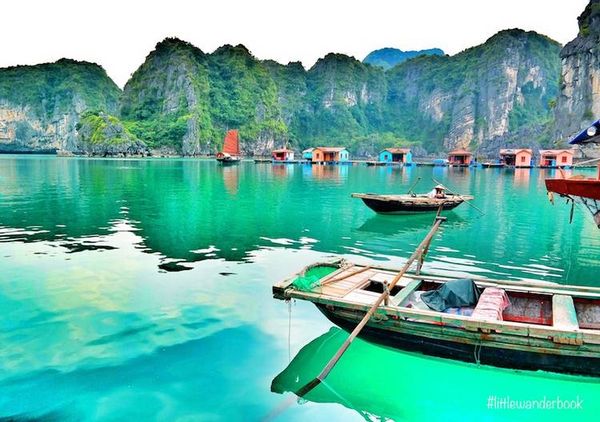
How Halong bay Floating Village has changed since locals move to the mainland?
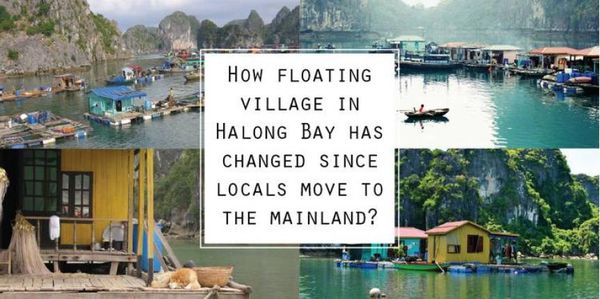
If you have a chance to visit Halong Bay, Vietnam, I think you must do this at least once a time in a life: visiting the local floating village. It is one of the most special attractions of Ha Long Bay that you can both enjoy the wild beauty of the UNESCO Heritage site and learn a lot of amazing things about the cultures of those local fisher men on the bay. Nowadays, in a Halong Bay cruise itinerary, you normally take the time to visit Vung Vieng fishing village – one of the last, the biggest and most beautiful fishing village existed on Halong Bay. It is located in the heart of Bai Tu Long Bay, with many floating households rising from the calm water and stay together, among the cover of thousands of limestone islands around.
How is Vung Vieng fishing village in the past?
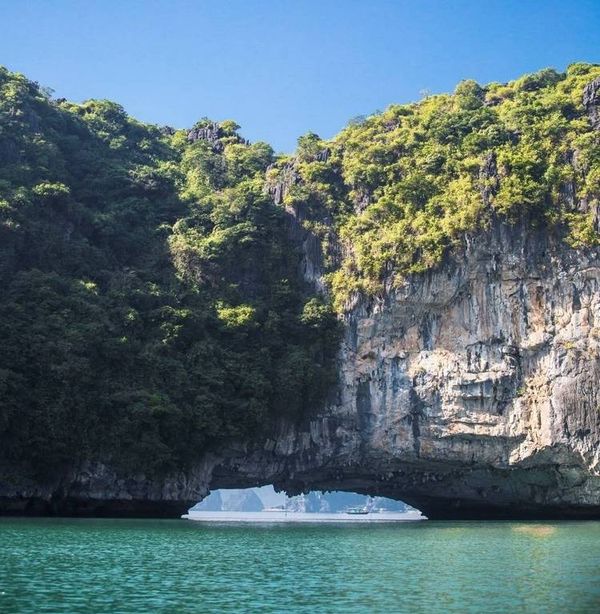
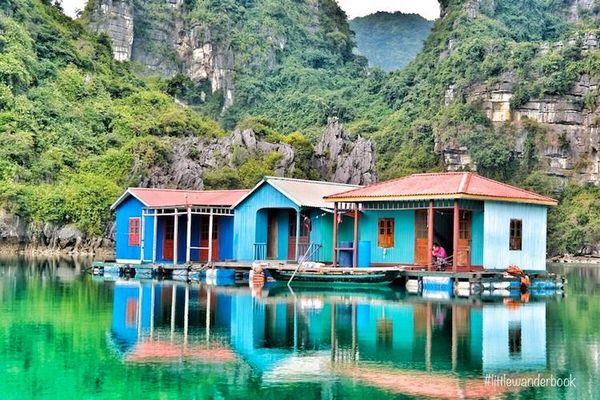
Colorful house – Photo by @littlewanderbook
Vung Vieng fishing village was first established in the 19th century when fishermen began mooring their boats and exchanging goods. Eventually, more fishermen settled in the area and a floating community emerged. It is 25km away from the mainland. In the past, the population of the village reaches more than one thousand people with hundreds household living together in a calm water area. They were living by catching fish and tourism. There will be some foods and clean water containers being transported from the mainland to the village to provide basic needs for people there. They built a lot of colorful floating house on huge Styrofoam buoys. In each small household, there’re multiple generations of a family living happily together in their hardest circumstances, which does make you feel so surprised about their spirit of optimism.

Photo by @littlewanderbook
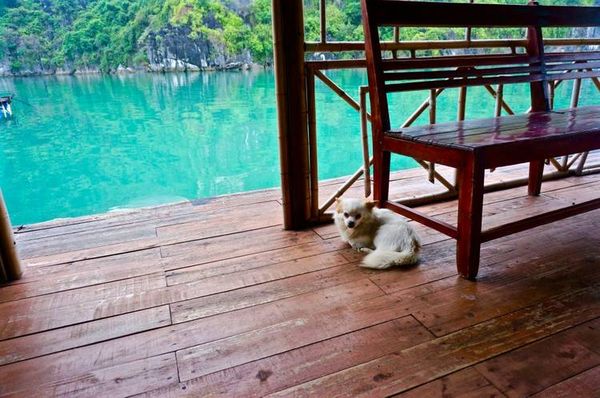
Photo by @ladyhattan
There is electric for daily life. In their lovely colorful houses, you can found their basic home appliances like televisions, cassettes, and radios, beds, wardrobe, etc. they even raising dogs for guarding the house. There’re “floating cultural house” and “floating school” for children. Every morning, the kids were driving small bamboo basket boats and go to school like children on the mainland.
How Vung Vieng fishing village has changed since locals move to the mainland (at the first time of migration)?
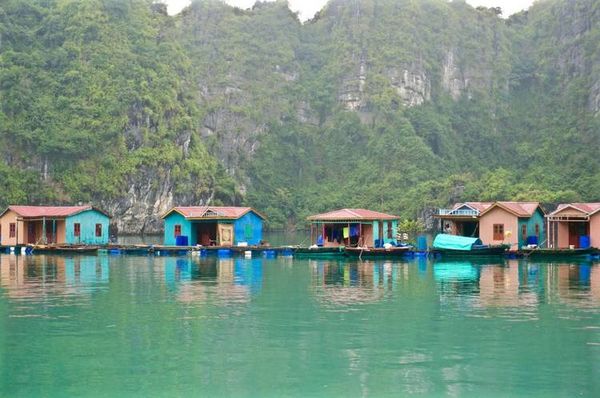 If you are lucky to have a chance to visit Vung Vieng fishing village in the past (before 2012), it must be very interesting and funny! Since 2012, due to some safety and environment issues, the Halong Bay management has announced the new project to move all resident of floating village to land. In mid-2014, more than 400 families and 1200 people have resettled on the mainland in a special area called Cai Xa Cong, set up for floating village residents, where is about 10km from Halong city and 10km from Vung Vieng fishing village. It takes 1 hour to reach Vung Vieng by boat.
If you are lucky to have a chance to visit Vung Vieng fishing village in the past (before 2012), it must be very interesting and funny! Since 2012, due to some safety and environment issues, the Halong Bay management has announced the new project to move all resident of floating village to land. In mid-2014, more than 400 families and 1200 people have resettled on the mainland in a special area called Cai Xa Cong, set up for floating village residents, where is about 10km from Halong city and 10km from Vung Vieng fishing village. It takes 1 hour to reach Vung Vieng by boat.
At the first time of the migration, the people there felt so uncomfortable by living away from the sea. They were living with the sea and relying on the sea for decades. After moving to the mainland without any job supports from the Management, their life had many fluctuations and was surrounded by some social evils. Besides, tourists visit the old Vung Vieng village will not enjoy fully the beauty of the floating village, it looks like the museum through floating houses, school, pearl farms…
The advantages of this new migration project are to bring better and higher education for the children, to bring the better life standard quality for local fishermen on the mainland. Moreover, the environment of Halong Bay will be in a better protection. Living in the middle of Bai Tu Long Bay, the floating villagers has caused some bad issues to the water there (shredded Styrofoam from buoys, daily domestic wastes throw to the sea).
Vung Vieng Village nowadays and the Environmentally- friendly aquaculture pilot project
Since 2015, Halong – Cat Ba alliance has run the new project called “Local engagement for sustainable development” project founded by USAID, which aims to strengthen the participation of local organizations and communities in the region.
And Indochina Junk- one of the top tour operators in Halong Bay for many years, has stuck with the community-based tourism in Vung Vieng village since 2009, joined a big hand with Halong – Cat Ba Alliance and pushed the project into a new period with many positive results until now.
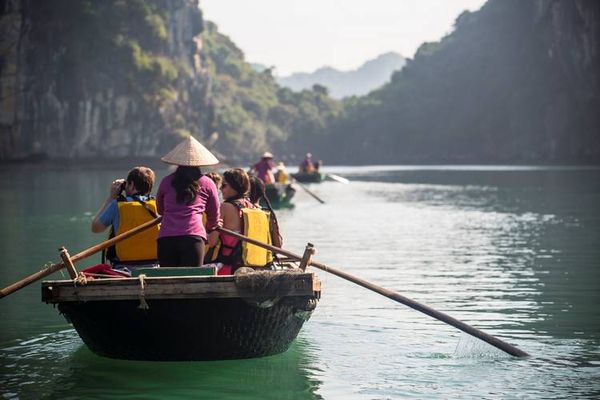
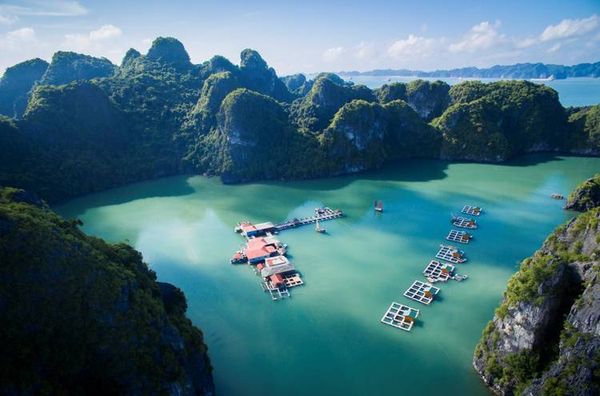
Through the village cooperate in the Halong – Cat Ba Alliance project, the fishermen have been trained deeper in community-based tourism and know how to provide safe water transport, provide quality service and uphold environmental standards. Every day, they welcomed about 300-400 visitors visit Vung Vieng village. Each boat guide is trained to give tourists important information and experiences, including showing visitors local sightseeing spots, explaining aqua culture and harvesting activities, and discussing the history of Vung Vieng fishing village.
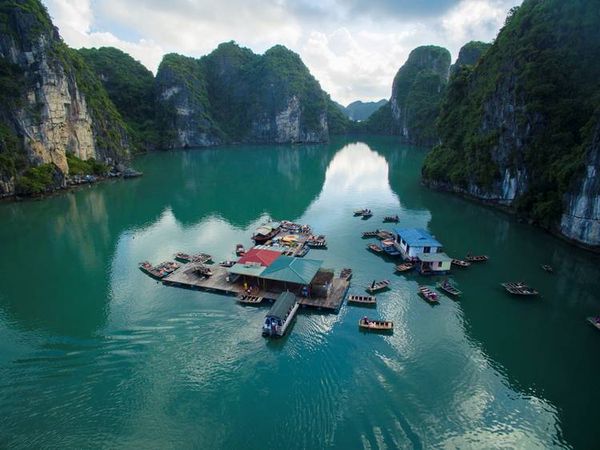 The USAID funded project has been successful due to cooperation from many people and groups. It has been implemented by Centre for Marinelife Conversation and Community Development (MCD) and its Partners and Nature Reconciliation (PanNature) and the Center for Environment and Community Research (CECR), along with cooperation from Quang Ninh province People’s Committee, relevant agencies, enterprises, NGOs,…and local communities in the alliance, advice from national and international experts.
The USAID funded project has been successful due to cooperation from many people and groups. It has been implemented by Centre for Marinelife Conversation and Community Development (MCD) and its Partners and Nature Reconciliation (PanNature) and the Center for Environment and Community Research (CECR), along with cooperation from Quang Ninh province People’s Committee, relevant agencies, enterprises, NGOs,…and local communities in the alliance, advice from national and international experts.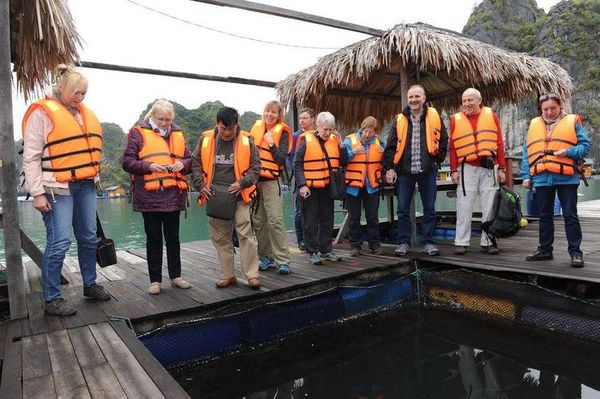
Through the project, the residents have been given new opportunities by participating in new model which teaches new skills and offers new employment opportunities through environmentally-friendly aquaculture and responsible tourism. Since joining the pilot project in 2015, they’ve formed common interest groups and attended training and study tours to different areas. They’ve known a lot of new things and have been able to put their knowledge to immediate practice in fish cages provided through the new project. The local fishermen now use standard aquaculture methods and fish cages and they used approved, manufactured feed instead of raw materials. They also make sure to select fish spices that are endemic to the local area and compatible with the ecosystem. Importantly, the new aquaculture farm has become a new tourist attraction.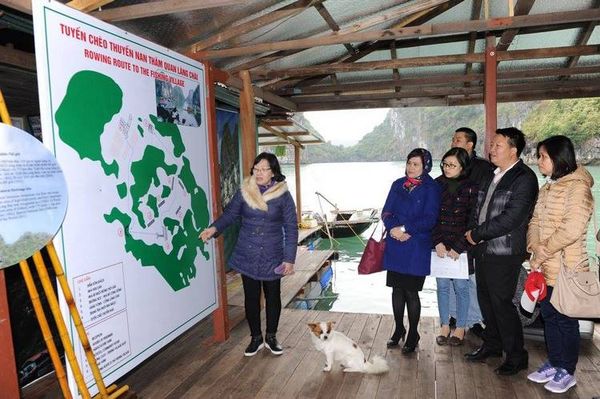
Under the enthusiastic support of Indochina Junk and other organizations, there are more and more visitors to Vung Vieng village now, they will travel by boat to see the fish farm, feed the fish and enjoy the peace of the village. This model has helped people there to attract more tourists and to increase their income. It’s also they’re ensured they’re involved in the sustainable management and use of Halong Bay’s natural resources.
Now the new-settled residents have been adapting to their life on shore. Every day, the children get on the bus to go to a better school. Parents no longer have to worry about their children staying in the village as they spend long days fishing in the sea. The people of Vung Vieng village have begun to love and rely on the sea again.



